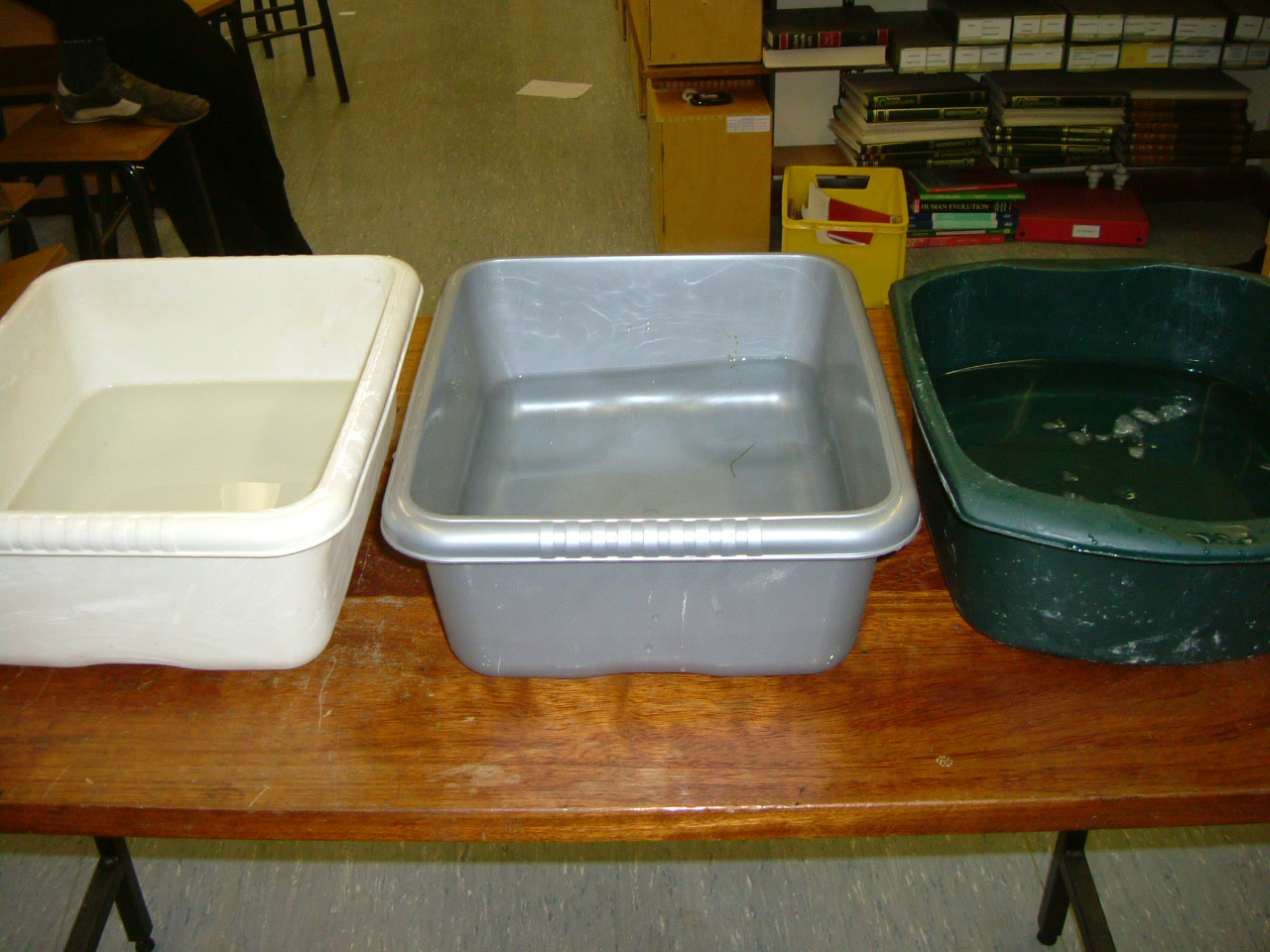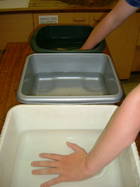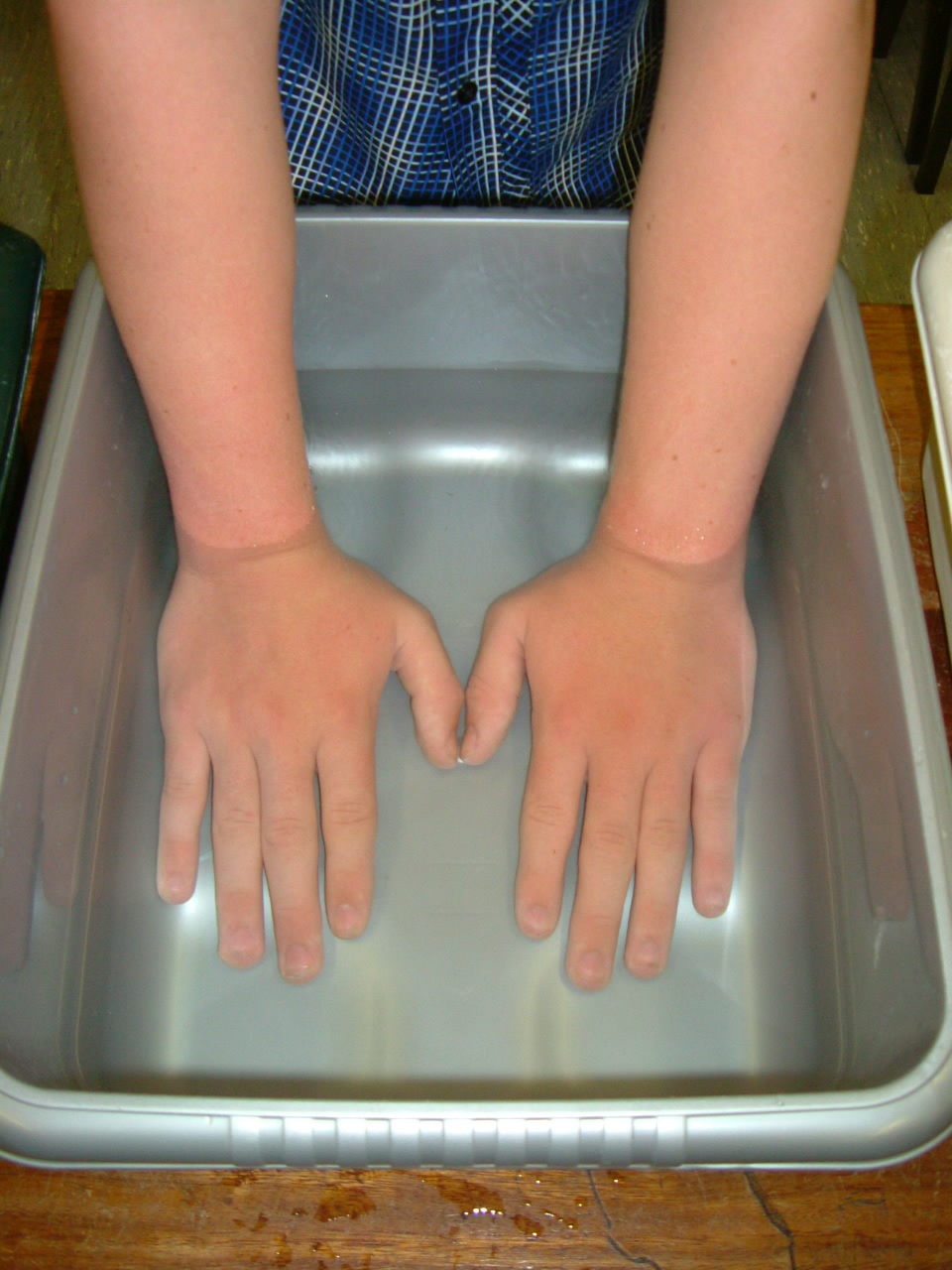Strange Temperatures
To do this experiment, you will need:
Three bowls or washing up basins large enough to put your hand in
- Warm water (NOTE - be careful not to make the water too hot!)
- Cold water, with a few ice cubes in it
- Medium temperature water
How to do the experiment:
1 - Fill one bowl with warm water, one with iced water and one with medium water.
2 - Put one hand into the warm water and one in the iced water for one minute.
3 - Take your hands out of the water and put them both into the medium water. How does the water feel?
So what's going on?
When you put your hands into the medium temperature water, the hand that's been in the cold water feels warmer while the one that was in the warm water feels cold.
Why is this?
It's because your senses are relative. They don't measure an absolute temperature or an absolute brightness of light; they make their measurements relative to the things around it. In the case of this experiment, the temperature sensors on your hands measure the temperature of the water relative to the temperature of your hand. If the water is warmer than your hand, it feels warm, and if it is colder than your hand, it feels cold.
Measuring temperature relative to a certain object (such as your hand) is fine if your hand stays at a constant temperature - but it doesn't. If you keep your hand in cold water for a long time, the temperature of your hand starts to drop. This means that the reference point to judge temperature by has changed. Water that once felt cold now feels relatively warm compared to your cold hand.
The opposite happens when you transfer your hand from the hot water into the medium water. Your hand is warm and so the medium water feels relatively cold.
The effect is most obvious in this experiment when you transfer a cold and a hot hand into medium temperature water at the same time: one hand is telling you the water is warm while the other is saying that it's cold, even though the actual temperature of the water is the same throughout!
Your hands give two different answers and your senses are confused!
This effect can be seen in other situations too. When people run a bath they generally tend to stir it with one hand. As a result, people should always test the water with the OTHER hand before getting in. This is because the hand that's been stirring will get used to the high temperature and send messages to the brain saying that the water isn't hot. However, as soon as you jump in with cold feet, the water will feel relatively scalding - so be warned!
Another example is when children are told not to wear their coats indoors because they won't feel the benefit. If you get used to being really hot and snuggly inside a coat in the house, as soon as you go outside you feel cold (like the hot hand going into medium water). However, if you keep your coat on the peg while in the house and only put it on outside, the addition of a warm coat to a warm (rather than hot) body means that the shock of braving a cold winter's day is relatively less.
You can even see this effect with your ears! If you've been in a noisy room and then move into another room that's playing a quiet radio, you can hardly hear it at all. However, if you sit there for five minutes you can start to hear the radio loudly, even though it's still at the same volume.
So the moral of the story is: don't believe everything your senses tell you!
Ingredients
 Three bowls or washing up basins large enough to put your hand in.
Three bowls or washing up basins large enough to put your hand in.
Warm water (NOTE - be careful not to make the water too hot!)
Cold water with a few ice cubes in it
Luke warm water
Instructions
 1 - Fill one bowl with warm water, one with iced water and one with medium water.
1 - Fill one bowl with warm water, one with iced water and one with medium water.
2 - Put one hand into the warm water and one in the iced water for one minute.
3 - Take your hands out of the water and put them both into the medium water. How does the water feel?
Result
 |
| Hands in Water |
When you put your hands into the medium temperature water, the hand that's been in the cold water feels warmer while the one that was in the warm water feels cold, even though they are both feeling water that is the same temperature.
Explanation
It's because your senses are relative. They don't measure an absolute temperature or an absolute brightness of light; they make their measurements relative to the things around it. In the case of this experiment, the temperature sensors on your hands measure the temperature of the water relative to the temperature of your hand. If the water is warmer than your hand, it feels warm, and if it is colder than your hand, it feels cold.
- Previous How to make a forcefield
- Next Build a Lava lamp










Comments
Add a comment